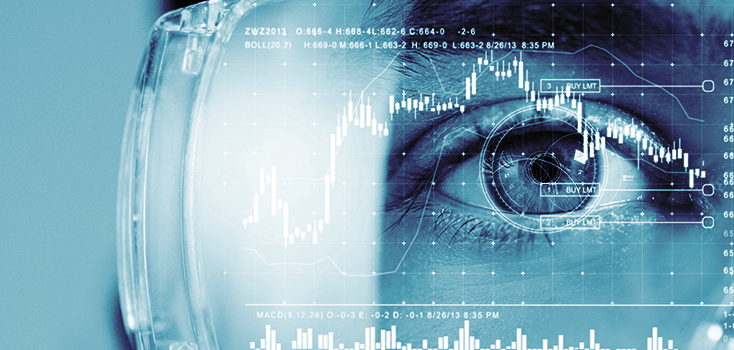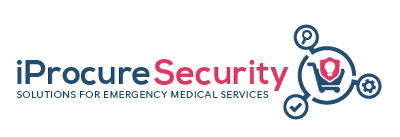
Can Augmented Reality Improve EMS Training?
In the educational field, the incorporation of technologies that provide enrichment to the teaching-learning process is more and more frequent. Augmented reality is a technology that provides resources that will be very useful to improve training for EMS teams. The project iProcureSecurity has identified potential needs in this field, and in the workshops organized by the project partners, the possibility has arisen of using augmented reality as a tool that has to be incorporated to the training EMS personnel throughout Europe. In this article the meaning and the possibilities of these technologies are discussed.
Augmented reality could be defined as the additional information obtained from observing an environment, and captured through the camera of a device that previously has installed specific software. This additional information can be translated into different formats. It can be an image, an image carousel, an audio file, a video, or a link – therefore enhancing the information immensely.
To access and use this technology it is necessary to have different elements:
- A camera device:
- PC with webcam
- Laptop with webcam
- Tablet
- Smartphone
- Wearable with camera (watches, glasses, etc.)
- A software in charge of making the necessary transformations to provide additional information.
- A trigger, also known as an information trigger:
- Image
- Physical environment (landscape, urban space, observed environment)
- Marker
- Object
- QR code
Types of augmented reality: Geolocated augmented reality
The augmented reality that is classified as “positioning”, owes its name to the fact that it is determined by activators, or “triggers” of the information which are the sensors that indicate the positioning of the mobile device:
- GPS: Indicates the location of the device through its coordinates.
- Compass: Refers to the orientation of the device in the direction that the built-in camera focuses.
- Accelerometer: Identifies the orientation and angle of the device in use.
The information is captured through the camera that contains the integrated device. As a next step, the information will be processed through the installed positioning software. This type of augmented reality is based on positioning parameters.
Marker-based augmented reality
Markers represent the type of information activator par excellence in the world of augmented reality and they could be grouped into three groups.
- QR codes
- Markerless NFT – Information triggers are real images or objects.
- Markers: they usually adopt geometric shapes in black and white and they are framed in a square. Sometimes they also include acronyms or simple images.
Levels
Different levels of augmented reality can be defined following the different degrees of complexity presented by applications based on augmented reality according to the technologies they implement
- Level 0 (linked to the physical world). Applications hyperlink the physical world through the use of barcodes and 2D (for example, QR codes). These codes only serve as hyperlinks to other content, so there is no 3D registration or bookmark tracking.
- Level 1 (with markers). Applications use markers, black-and-white, square, and schematic drawings, typically for 2D pattern recognition. The most advanced form of this level also allows the recognition of 3D objects.
- Level 2 (without markers). Applications replace the use of GPS markers and compass on mobile devices to determine the user’s location and orientation and superimpose points of interest on real-world images.
- Level 3 (increased vision). It is represented by devices such as Google Glass, high-tech contact lenses or others that, in the future, will be able to offer a fully contextualized, immersive and personal experience.
The process by which augmented reality is produced is quite simple as far as its understanding is concerned, and is made up of the elements described above. After having a device with a previously installed software, the first step would be to activate the application in question, focus with the device’s camera on a specific object of interest, and capture it. After the transformation of the data by the application or software, the screen of the device will show the additional information associated with the reality that has been captured by the camera.
Educational uses of augmented reality
The first Horizon Report was released in 1993 published by the NMC (New Media Consortium). This annual report presents, in general terms, a prediction of the emerging technologies in the educational field in the short, medium and long term. Although in its origins the consortium was made up of manufacturers of software, hardware and multimedia products and it was destined to the diffusion of their products, they decided to bet on the integration of educational communities of higher education. Currently it is made up of educational consortia, schools, museums, and educational innovation centres. The report has an international circulation.
The first time that Augmented Reality appeared in this report was in the report for the year 2010 (Horizon 2010 Report), in which it was foreseen that within two to three years Augmented Reality would be managed in a simple way accessible to everyone, and that the use of complex or specialized equipment would not be necessary. It stated that in this period its use on the campus would be widespread and it made reference to the fact that in the consumer world in that year it already presented very simple access.
As can be seen in 2013, its use was widespread in different fields such as tourism, advertising and entertainment, but it was not widely used on campus yet. Curiously, at lower levels such as primary or secondary education, it began to represent a habitual practice in their teaching tasks.
Taking into account the predictions of the Horizon Reports and the use and prominence that can be verified at the different educational levels and with a global presence, it is clear that the application of Augmented Reality in education is here to stay, at least for a few more years.
The possibilities of applying augmented reality in education are very numerous. What is important is the educational objective to achieve and to find the appropriate application for its implementation. Among the many added values that Augmented Reality can bring to education are:
MOTIVATION: The use of innovative technology in the classroom increases student motivation enormously.
COLLABORATIVE WORK: Augmented Reality through its applications and the use of the necessary devices represents a very appropriate resource to carry out activities among students, it facilitates group work.
CONSTRUCTION OF KNOWLEDGE BY THE STUDENT: If the students are involved from the first moment, they are guided in the use of applications on Augmented Reality, and they have the appropriate devices at their disposal, they will be able to learn by discovering step by step as participants in the process, not only as mere spectators or observers of the additional information presented to them.
MORE INFORMATION: Through an image, a code, a word or a short text the trainees can access great information that broadens the possibility of acquiring more knowledge, than when only observing alone.
FREE TECHNOLOGY: In order to implement the technology at hand, it is not necessary to make large investments. Most of the applications are free or have a free version that allows trainees to handle basic functions and do great jobs.
GREATER ACCESSIBILITY: It is very common for the student to have the possibility of having a device at their disposal to be able to use augmented reality since they can carry out many tasks with a simple smartphone or tablet.
DEVELOPMENT OF TECHNOLOGICAL SKILLS: Using augmented realization in the educational field implies the use of a type of technology that, although simple, allows learning and managing technological language that, using traditional resources, would not be acquired.
Augmented Reality has to become an essential resource in the design of training materials for EMS teams across Europe. We will soon see a rapid growth in methodologies and tools.
REFERENCES
Blázquez Sevilla, Alegría, Realidad aumentada en educación, UPM, 2017
http://oa.upm.es/45985/1/Realidad_Aumentada__Educacion.pdf
Prendes Espinosa, Carlos, Realidad aumentada y educación: análisis de experiencias prácticas, Píxel-Bit. Revista de Medios y Educación. Nº 46. Enero 2015. ISSN: 1133-8482. e-ISSN: 2171-7966.
https://recyt.fecyt.es/index.php/pixel/article/viewFile/61619/37631
Cabero, J., & Barroso, J. (2016). Posibilidades educativas de la Realidad Aumentada. NAER, New Approaches in Educational Research, 5(1), 46-52.
Rubio-Tamayo, Jose Luis & García, Francisco & Gértrudix, Manuel. (2015). Simulación, realidad aumentada e interactividad: transformando el espacio educativo.
Quesada, M. B., & Poveda, A. M. S. (2016). Realidad aumentada como tecnología aplicada a la educación superior: Una experiencia en desarrollo. Innovaciones educativas, 17(23), 41-50.

